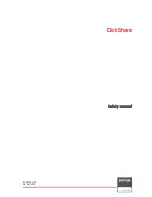
LaserVision with Digital Sound Disc (LDD)
As discussed on the page 74, Vol. 7, NTSC L D D discs have
digital sound information in addition t o the conventional
analog picture a n d sound information.
The NTSC L D D system allocates a frequency space to
digital sound signal which has a frequency band of 0-2MHz
as seen in Fig. l a and 2a.
The level of the digital sound signal is a little higher t h a n
the analog sound carriers. If the level is t o o high, the digital
signal will interfere video signal, a n d if it is t o o low, bit
error rate will increase and r a n d o m noise will be generated.
Unfortunately, in the frequency spectrum of P A L LV sys
tem, there is n o r o o m for the digital sound because t h e
range of 0-2MHz has already been occupied by two audio
carriers of 684kHz a n d 1,066kHz as seen in Fig. l b . It is
necessary t o remove the two analog sound carriers a n d the
second lower sideband of the video carrier to insert the dig
ital sound signal in t h e spectrum. T h e compatibility be
tween the conventional P A L LV disc a n d P A L L D D disc
will be lost if the carriers are removed. P A L L D D discs
are not being marketed because of this incompatibility.
NTSC LaserVision standard
dB
PAL LaserVision standard
Sync
23
New Technique
Sync
A i A 2
2n
d
sideban
d
Audi
o
signal
s
1s
t sideban
d
Vide
o
signa
l
dB
A u d i o
signals
A1 A2
2n
d
sideban
d
1s
t sideban
d
Vide
o
Signa
l
f r e q . MHz
freq. MHz
a. NTSC
b. PAL
Fig. 1 Frequency Spectra of NTSC and PAL LaserVision Signal
dB
Audio signals
Video signals
Digital
Analog
freq. MHz
dB
Digital audio
signal
freq. MHz
a. NTSC
b. PAL
Fig. 2 Inserting Digital Signal into LaserVision Signal
















































